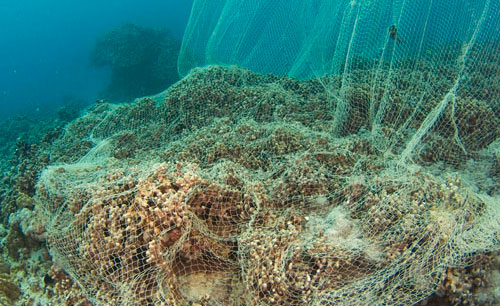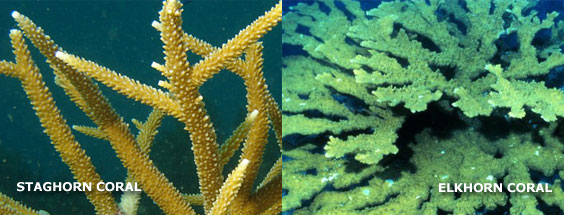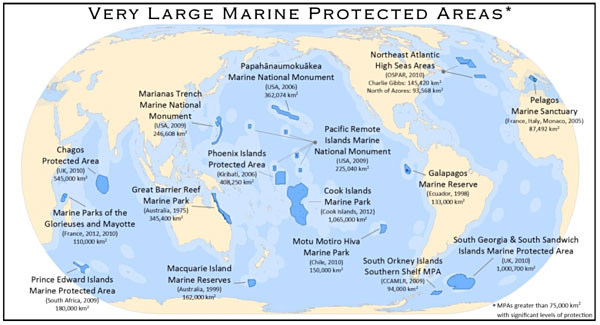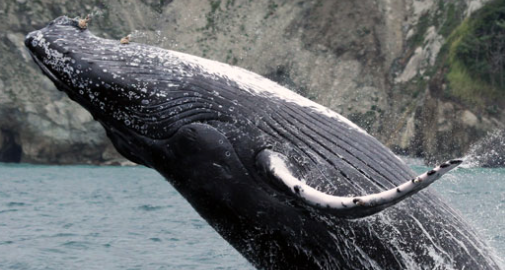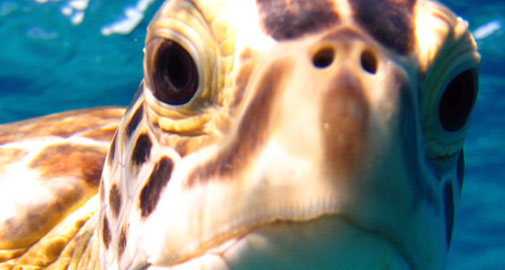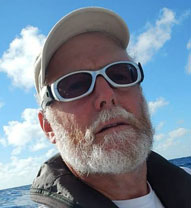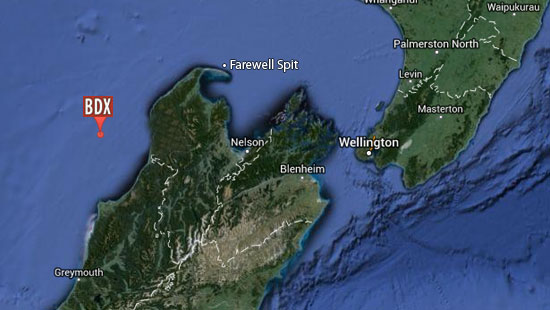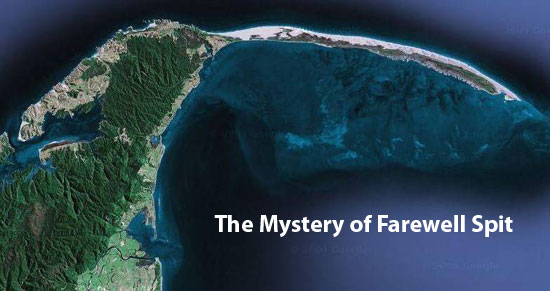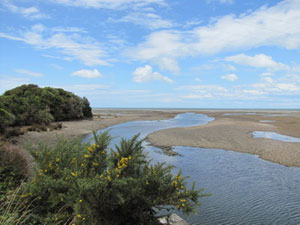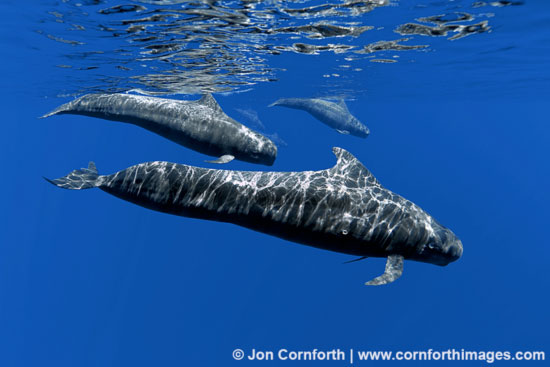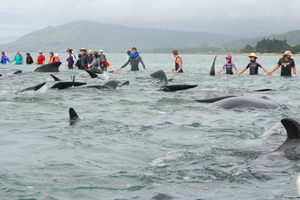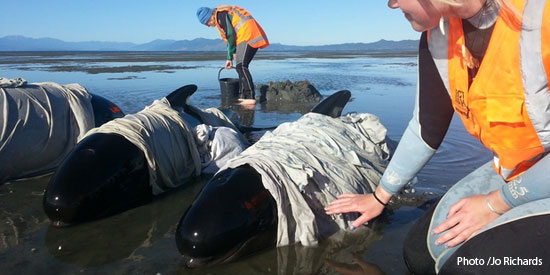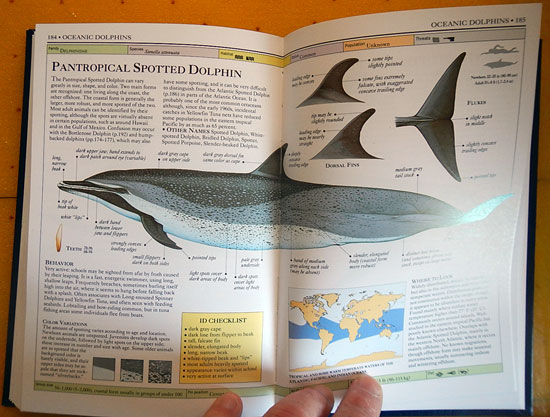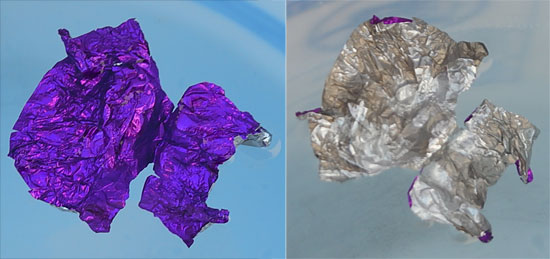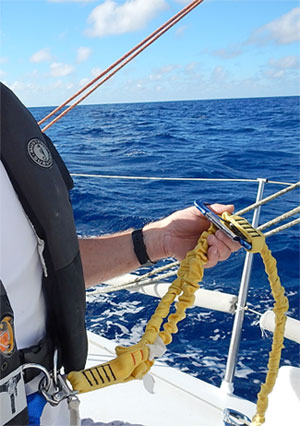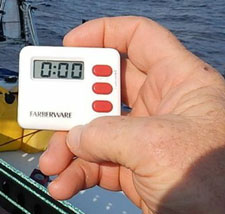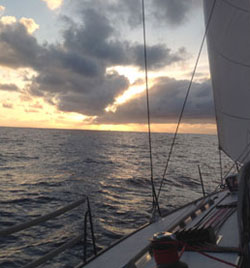 What a beautiful night it was… followed today by an exciting morning on the sea! Under a lovely sunset last evening, after we finished off an amazing banquet of BBQ ribs, fresh corn on the cob and French fries, prepared by our very own Chef Pierce, we spent the night cruising in spectacular conditions with 15-20 knots of tailwinds pushing us along at a 10-knot average under a sky full of stars!
What a beautiful night it was… followed today by an exciting morning on the sea! Under a lovely sunset last evening, after we finished off an amazing banquet of BBQ ribs, fresh corn on the cob and French fries, prepared by our very own Chef Pierce, we spent the night cruising in spectacular conditions with 15-20 knots of tailwinds pushing us along at a 10-knot average under a sky full of stars!
The night before, Monday was equally sweet and starry as well… but when it was over and the sun rose, we had a rather laughable morning when we discovered that the head (toilet) and holding tank were clogged and full! After seven fairly experienced mechanics made a few cautious attempts at unplugging the cranky system, it was heroic Jon Pond who finally (and carefully) stepped up and cracked the deck opening and let loose a geyser of ugly stuff! It’s a longer story than that, but one not really well-suited for recounting without some beers nearby… but let’s just say that next time you run into one of us, ask for the complete audio version.
 After our speedy night last night, sunrise this morning, found us about 130 miles out of Narragansett Bay. We were just crossing over the continental shelf when one of the fishing rods suddenly whined to life, signaling something hefty on the line! Bruce Dickinson and Dave Brayman took to the rod and pulled up a most beautiful White Marlin, probably about 3 feet long and 50 pounds. As Marlin is not a good eating fish, Bruce with great finesse, eased the hook out of the fish’s mouth and set her free. Not too much later, our luck was even better as they caught a beautiful 8-pound Yellowtail Tuna. This was the perfect size fish for a bit of morning sushi not to mention dinner tonight for the whole crew – all done with little or no waste… sustainability in its true definition.
After our speedy night last night, sunrise this morning, found us about 130 miles out of Narragansett Bay. We were just crossing over the continental shelf when one of the fishing rods suddenly whined to life, signaling something hefty on the line! Bruce Dickinson and Dave Brayman took to the rod and pulled up a most beautiful White Marlin, probably about 3 feet long and 50 pounds. As Marlin is not a good eating fish, Bruce with great finesse, eased the hook out of the fish’s mouth and set her free. Not too much later, our luck was even better as they caught a beautiful 8-pound Yellowtail Tuna. This was the perfect size fish for a bit of morning sushi not to mention dinner tonight for the whole crew – all done with little or no waste… sustainability in its true definition.
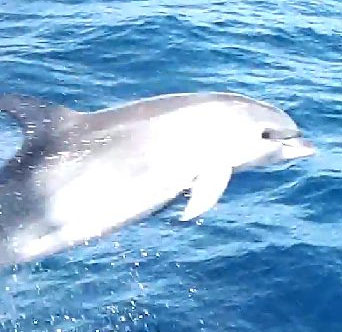 As if that wasn’t enough action for one morning, soon we were blessed with a visit from a pod of dolphins… all swimming and cavorting… with one feller in particular who showed off with some great aerial skills.
As if that wasn’t enough action for one morning, soon we were blessed with a visit from a pod of dolphins… all swimming and cavorting… with one feller in particular who showed off with some great aerial skills.
Yay for the sea when it comes to life like that, leaving you once more humbled by the wondrous gifts it effortlessly brings forth!
Today is once again warm and beautiful and we’re sailing at a good pace that should have us into harbor just after sunset tonight. Here’s to hoping for an uneventful rest of the passage from Bermuda to Newport!
So let me return to my appointed task of answering some of those questions I am most frequently asked, that I began here in Monday’s post. Let’s start here.
:: Many folks have asked me… What was the most beautiful or memorable part of the journey?
This is rather difficult to pin down to one specific answer, so let me pick five things. Then again, depending on how long I’m given to ponder the question, those five choices will likely change. But for now…
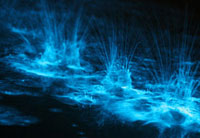 1) You’ve often heard me tell of the beautiful bioluminescence I encountered at several points along the way that more than a few times left me awestruck. That certainly ranks in the top five.
1) You’ve often heard me tell of the beautiful bioluminescence I encountered at several points along the way that more than a few times left me awestruck. That certainly ranks in the top five.
2) Storms in the Southern Ocean, especially the cyclone that we outran elevated the raw force of that tempest to something of a spiritual level for me.
3) The first sighting of the snow-capped mountains of the South Island of New Zealand after the generous fishermen of Ocean Odyssey gave me additional fuel was inspiring.
4) The colors of the sunset that same night still plays on the big screen in my mind, as perhaps the most majestic of the many sublime sunsets I witnessed.
5) I don’t think I’ll get over the sense that some mysterious symphony was being played out on the wings of the sea birds as they crisscrossed back and forth behind me, sewing up the wake I’d made through their ocean.
:: Another frequently asked question is… How can you be alone for that long?
I know that many people have different levels of comfort with being alone. Some work with people all day, every day and can’t wait to get home to the quiet of their house; others don’t feel comfortable being alone for even a few hours. For me, being alone is something that I have always been comfortable with and enjoyed. I’ve worked alone on construction projects, spent time traveling or driving across county… and of course, have spent a considerable time alone sailing on either Lake Michigan or the oceans.
I think we all need occasional contact with other people and I’m no exception to that. I almost daily communicated through emails with friends and family and every few days, took a minute or two to make a phone call on the Iridium satellite phone. Still being alone has always come naturally for me and it has allowed me to build that contrasting view of life that allows me to better appreciate the times in my life when I’m wrapped in human company, as I am now on this brief trip.
Also, being alone gives me the chance to connect more peacefully with myself and to discover and experience without so much distraction, the various thoughts and feelings that rise up from within me. This trip certainly provided me ample opportunities for such experiences and reflections, which I hope before long to transcribe and share in longer book form.
:: I’ll finish for now, with this one… What was the scariest part of the circumnavigation?
This isn’t quite so easy question to answer either, because I think I know what most people want to hear for my answer. It’s only human nature to want to hear an amazing tale of a wild tempest that nearly takes your life. But for me that wasn’t the case. While there were indeed several amazing and ultra-challenging storms, which demanded some of the toughest heavy weather sailing I’ve encountered in my life, even during those times, I never felt scared.
Strange as it may seem, those were the moments that I had sought out and prepared myself and Bodacious Dream to handle… and we did so with good fortune. Edgy? Very much so… and for days on end, I felt as though every sense in my body was pumping at 125 percent. Alert to every motion of the boat, every sound, even every change in the pitch of the wind, my mind and body processed huge amounts of sensory input to help me keep Bodacious Dream trimmed and sailing within the flow of an agitated ocean.
I’m sure to some all that seems like it would qualify as a recipe for scary, but remember, I was in a world I had grown fairly comfortable with and that I knew quite well. Take me out of that comfort zone and put me in some other world that I don’t know… and I can tell you a different story about being scared. Brain surgery, police and fire rescue, combat, raising kids even … would all scare me in more conventional ways, but being in the folds of the sea, while it can be very edgy, never pushed my scare button. I will admit though that I was on the edge of my seat for much of the voyage… as each moment out there is a one-of-a-kind roller coaster ride!
Ok, well getting back to the present moment, I don’t want to miss the wonder and beauty of the last 100 miles of sailing with good friends on a friendly ocean day. Conditions on the East Coast will likely change dramatically in a couple of days as Tropical Storm “Arthur” builds and moves up the coast this weekend. It will be nice to be ashore for once, watching it instead of running from it.
– For now, DR signing off as part of the no longer odious and the very well fed crew of Bodacious IV under the stalwart leadership of Captain Tim Eades!

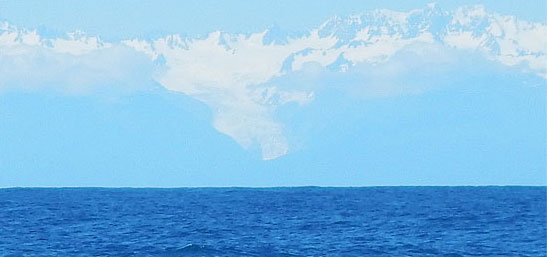
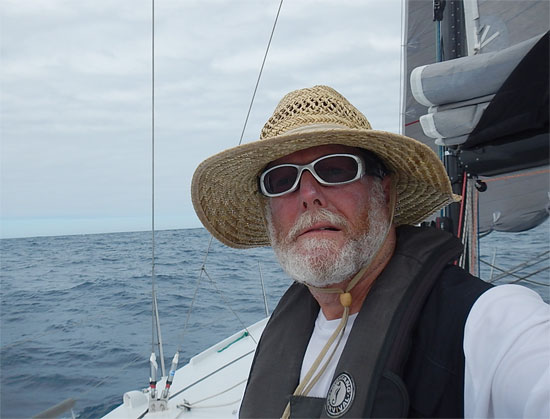
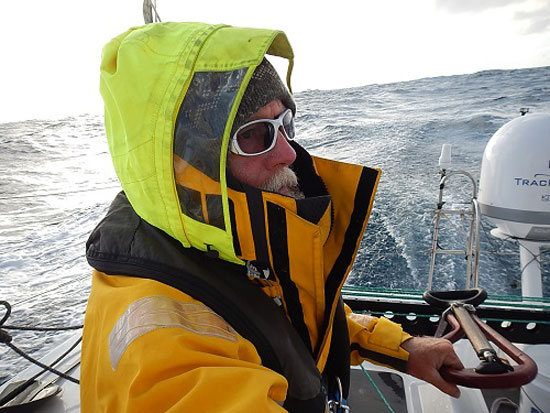
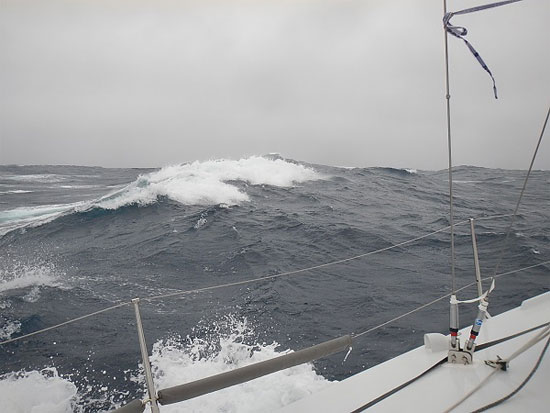
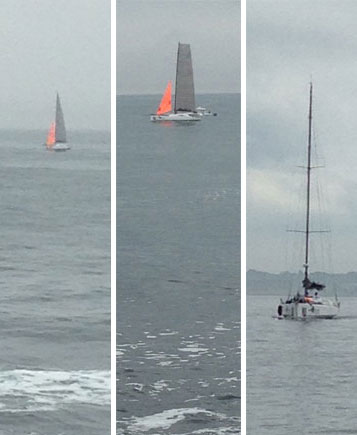 By the time you read this, I will be docked in
By the time you read this, I will be docked in 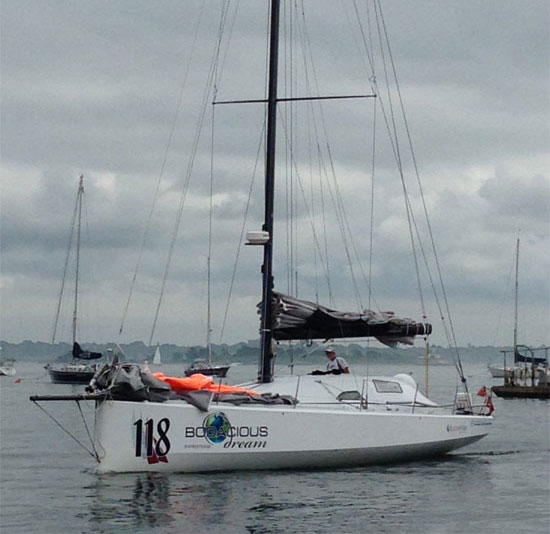
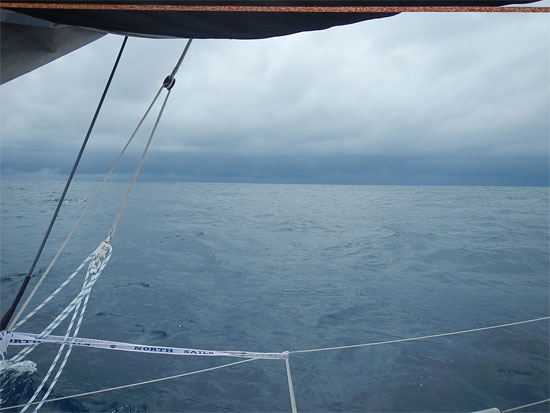

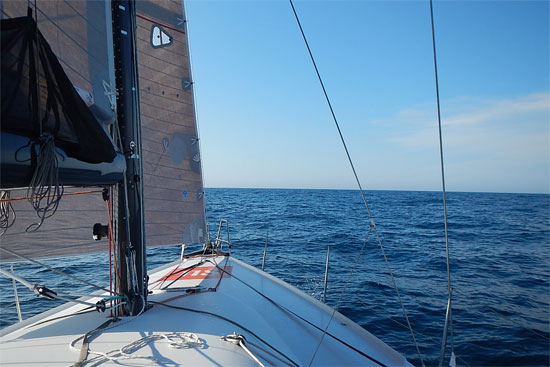
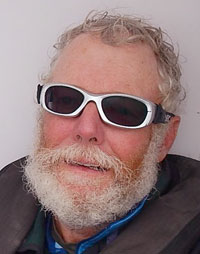
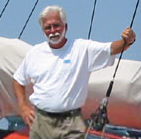
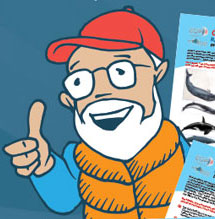
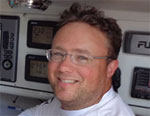
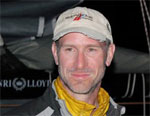
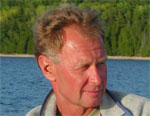
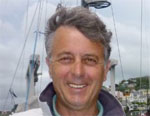
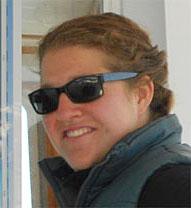
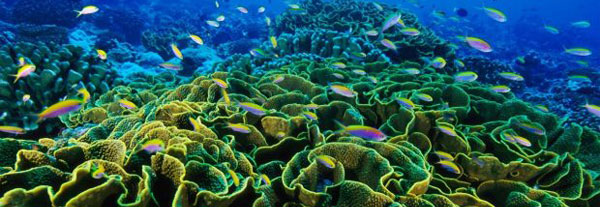
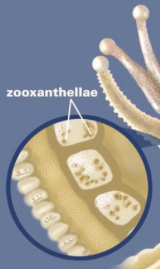 A coral reef is made up of many colonies of coral polyps which build the reef structure out of calcium carbonate. Tropical corals contain zooxanthellae, which is tiny algae that lives inside the coral where it photosynthesizes, creating food from sunlight. These algae are also what gives coral its brilliant and diverse colors. This means that coral can only occur in the “photic” zone, where sunlight penetrates the water. Corals polyps feed by extending stinging tentacles outwards to capture small prey and particles in the water column. Corals are related to other stinging animals including sea anemones and jellyfish.
A coral reef is made up of many colonies of coral polyps which build the reef structure out of calcium carbonate. Tropical corals contain zooxanthellae, which is tiny algae that lives inside the coral where it photosynthesizes, creating food from sunlight. These algae are also what gives coral its brilliant and diverse colors. This means that coral can only occur in the “photic” zone, where sunlight penetrates the water. Corals polyps feed by extending stinging tentacles outwards to capture small prey and particles in the water column. Corals are related to other stinging animals including sea anemones and jellyfish.